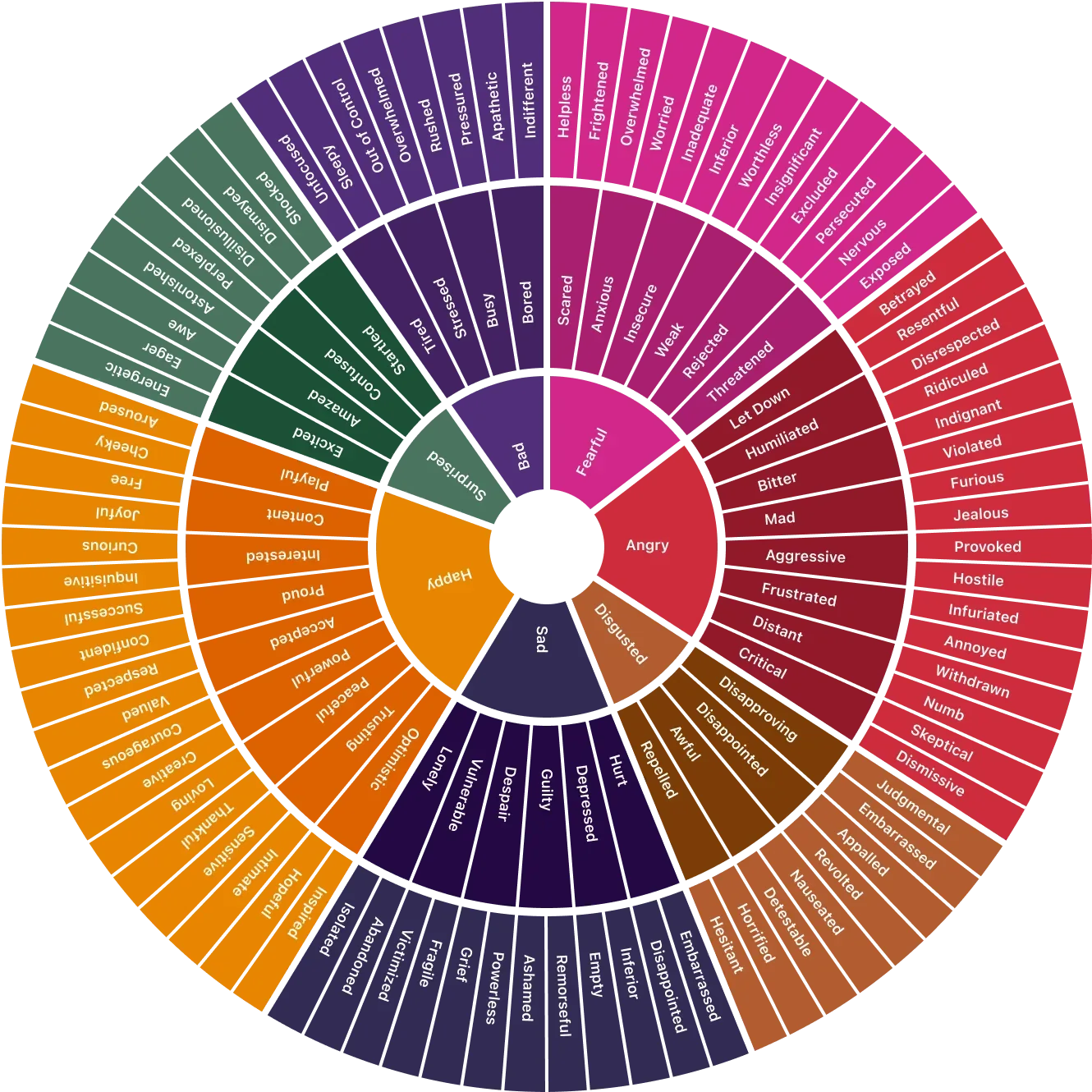How The Wheel Of Emotion Could Be Your Wheel Of Fortune
In recent years, the feelings wheel has become an invaluable tool for therapists, coaches, and even marketing professionals. Originally developed by psychologist Dr. Gloria Willcox, the wheel helps people go beyond basic emotions like happy, sad, or angry and access the nuanced language of feelings.
But this isn’t just about self-awareness. In the age of emotional intelligence (EQ), understanding the full spectrum of emotions is a powerful skill—whether you’re managing relationships, building a team, or creating marketing campaigns that truly connect with people.
What Is a Feelings Wheel?
A feelings wheel is a visual framework that organises emotions into categories.
At the centre, you’ll usually find six core emotions: happiness, sadness, fear, anger, surprise, and disgust.
Moving outward, each core emotion breaks into more specific feelings. For example, happiness may expand to proud, excited, or optimistic.
On the outer ring, the language gets even more precise. Instead of just “sad,” you may identify as lonely, guilty, or ashamed.
This layered approach makes the wheel a practical emotional vocabulary builder—helping people name what they feel with accuracy and depth.
Emotional Intelligence in Action
Research shows that people with a wider emotional vocabulary are better at managing stress, building relationships, and resolving conflicts. When you can name your emotion precisely, you’re better equipped to regulate it.
Building Human Connection
When individuals or brands use language that reflects real emotions, it creates empathy and trust. Saying “we understand your frustration” feels very different than saying “we know you’re angry.” Precision resonates.
Marketing That Resonates
Brands that successfully tap into nuanced emotions move beyond shallow taglines. They create campaigns that feel personal, relatable, and human. Think about Dove’s Real Beauty campaigns—rooted not in “happiness,” but in deeper emotions like self-acceptance and pride.
How to Use the Feelings Wheel in Everyday Life
Personal Growth: Use the wheel to journal daily, naming your emotions and reflecting on their triggers.
Workplace Communication: Leaders can use it to better understand team dynamics and build psychological safety.
Conflict Resolution: Identifying specific emotions prevents conversations from getting stuck in blame and defensiveness.
Creative Development: For marketers, it can spark campaign insights. Instead of asking “how do we make people happy?” ask: “Do we want them to feel optimistic, hopeful, or reassured?”
The Feelings Wheel and Marketing: A Powerful Duo
A feelings wheel in marketing helps strategists map campaigns to emotions more deliberately. For example:
Excited → Product launches, limited-time offers
Proud → Community-driven campaigns, user-generated content
Hopeful → Purpose-driven campaigns like sustainability or inclusivity
The feelings wheel is more than a psychological tool—it’s a roadmap for emotional intelligence in every part of life. For individuals, it builds self-awareness and resilience. For teams, it fosters communication and empathy. And for brands, it creates emotionally intelligent marketing that resonates far beyond the surface level.
In a world saturated with content, the brands—and people—that stand out are those who speak the language of emotions with precision and care. The feelings wheel is the perfect place to start.


